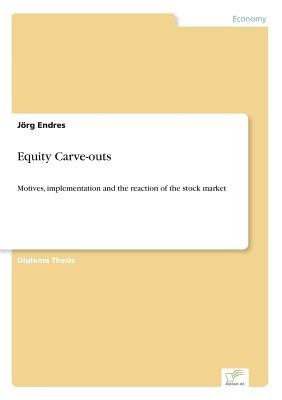
- Išsiųsime per 10–14 d.d.
- Autorius: Jörg Endres
- Leidėjas: Diplom.de
- Metai: 2002
- Puslapiai: 112
- ISBN-10: 3838652894
- ISBN-13: 9783838652894
- Formatas: 14.8 x 21 x 0.7 cm, minkšti viršeliai
- Kalba: Anglų
- Extra -15 % nuolaida šiai knygai su kodu: ENG15
Atsiliepimai
Aprašymas
Inhaltsangabe: Abstract: As especially in the 1990s corporations today still reconsider their organisational and ownership structures to become more competitive and profitable. Corporate restructuring, however, is not a value creating mechanism per se, but it can enhance corporate flexibility and focus the company on its main line of business. During a restructuring process, the parent firm has several options and choosing the right one in order to be successful is probably one of the most challenging tasks for the management. Options can be utilised to reduce ownership through a Carve-out or eliminate involvement in a Spin-off or Asset Sell-off. A rather unknown form, the Tracking Stock, will also be mentioned and explained. They all added a new dimension to the corporate landscape. Typically, the corporation's aims of restructuring are to create shareholder value. In the last two decades, the tendency was to strengthen the focus on its core businesses and becoming more and more a 'pure player' in its extreme form. The potential of divestiture activities during the next years will still be very high, if one imagines that only in Germany the 30 DAX companies own around 4.500 subsidiaries. One particularly interesting alteration of firm boundaries involves a parent firm partially divesting its ownership stake in a subsidiary via an Equity Carve-out. Equity Carve-outs have become widely known tools for corporations that shed divisions, which are no longer part of their core business. Especially during the last years high growth segments with tremendous potential could be unlocked through this form of divestiture. One of the main advantages for the parent is that it can still benefit from the growth of its subsidiary, by selling only a portion of the new entity in an IPO. Furthermore the subsidiary can gain new resources through a capital increase and operate independently. Chapter two will first give an insight about the effect of diversification on firm value andEXTRA 15 % nuolaida su kodu: ENG15
Akcija baigiasi už 5d.16:40:23
Nuolaidos kodas galioja perkant nuo 10 €. Nuolaidos nesumuojamos.

- Autorius: Jörg Endres
- Leidėjas: Diplom.de
- Metai: 2002
- Puslapiai: 112
- ISBN-10: 3838652894
- ISBN-13: 9783838652894
- Formatas: 14.8 x 21 x 0.7 cm, minkšti viršeliai
- Kalba: Anglų




Atsiliepimai